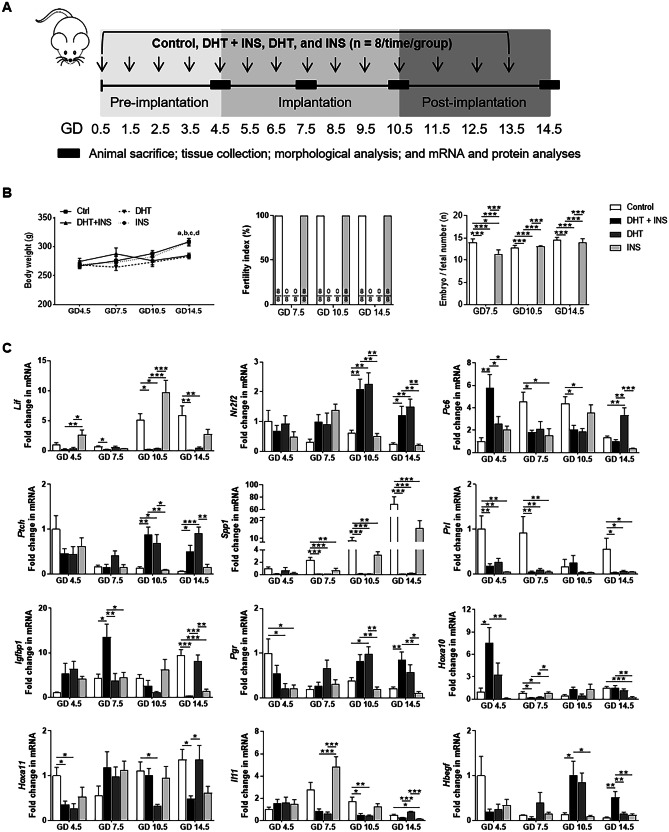Fig. 1.
Exposure to DHT or INS alone or in combination alters body weight, embryo or fetal number, and implantation-related gene expression in rats during pregnancy. Schematic of the experimental design A. Comparison of body weight and embryo or fetal number in pregnant rats treated with DHT and/or INS (B, n = 8/group). The fertility index is the percentage of matings that resulted in pregnancy. In all plots the data are presented as means ± SEM. aP < 0.05, Control (vehicle) group vs. DHT + INS group; bP < 0.01, Control group vs. DHT group; cP < 0.05, DHT + INS group vs. INS group; dP < 0.05, DHT group vs. INS group. *P < 0.05, ***P < 0.001. Time-dependent changes in implantation-related gene expression C. After removing the embryos/fetuses and placenta, uterine tissues from pregnant rats treated with vehicle, DHT + INS, DHT, or INS were used for analyzing genes for uterine receptivity and decidualization by qPCR (n = 4–6/group). In all plots, data are presented as means ± SEM (vs. Control GD 4.5 values). Statistical tests are described in the “Materials and methods” section, and differences between the groups are reported as *P < 0.05, ** P < 0.01, and ***P < 0.001

